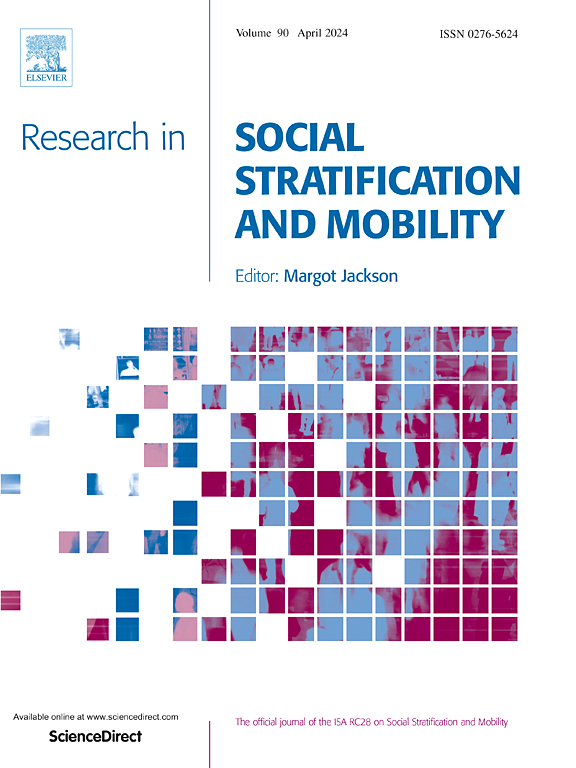性别差距的逆转是一个反馈循环吗?影响欧洲国家高等教育性别差距不平等的人口因素
IF 2.7
1区 社会学
Q1 SOCIOLOGY
引用次数: 0
摘要
在过去的20年里,欧洲人口的教育结构发生了重大变化。欧洲国家接受过高等教育的年轻人(25 - 34岁)的平均比例从2000年的25% %增加到2020年的41% %。这种教育扩张伴随着性别比例向女性倾斜和性别差距逆转(GGR)的增长。我们处理影响高等教育中GGR趋势的人口因素。我们使用了在12个欧洲国家的代际和性别项目(GGP)下收集的第一轮代际和性别调查(GGS-I)数据。我们分析了父母受教育程度低的婚姻(妻子受教育程度高于丈夫的婚姻)、父母第三代同性婚姻(妻子受教育程度与丈夫相同的婚姻)、父母离婚和原籍家庭不完整的影响。实证结果表明,上述三个因素对女性受高等教育程度均有正向影响,并提高了GGR。我们认为,在宏观层面上,GGR水平的提高加强了这些因素在受过高等教育的人口中的普遍存在,从而使GGR随着时间的推移再次提高。基于这种循环论证,我们建议将高等教育中的GGR解释为一个正反馈循环。本文章由计算机程序翻译,如有差异,请以英文原文为准。
Is the gender-gap reversal a feedback loop? Demographic factors influencing gender-gap inequalities in tertiary education in European countries
The educational structures of European populations have changed significantly over the last 20 years. The average proportion of young people (aged 25–34) in European countries who had attained tertiary education increased from 25 % in 2000 to 41 % in 2020. This educational expansion has been accompanied by a change of the gender ratio in favor of women and the growth of a gender-gap reversal (GGR). We deal with demographic factors that influence the trends in GGR in tertiary education. We use the first round of Generations and Gender Surveys (GGS-I) data collected under the Generations and Gender Programme (GGP) in 12 European countries. We analyze the effects of parental educational hypogamy (marriage where the wife’s education level is higher than the husband’s), parental tertiary homogamy (marriage where the wife’s tertiary level is the same as the husband’s), parental divorce, and non-intact origin family. The empirical results show that three of these factors have positive effects on women’s tertiary education attainment and increase the GGR. We argue that the increasing level of GGR then reinforces the prevalence of these factors in the tertiary educated population at the macro level by which the GGR is boosted again over time. Based on this cyclic argument we suggest interpreting the GGR in tertiary education as a positive feedback loop.
求助全文
通过发布文献求助,成功后即可免费获取论文全文。
去求助
来源期刊
CiteScore
7.80
自引率
6.00%
发文量
46
期刊介绍:
The study of social inequality is and has been one of the central preoccupations of social scientists. Research in Social Stratification and Mobility is dedicated to publishing the highest, most innovative research on issues of social inequality from a broad diversity of theoretical and methodological perspectives. The journal is also dedicated to cutting edge summaries of prior research and fruitful exchanges that will stimulate future research on issues of social inequality. The study of social inequality is and has been one of the central preoccupations of social scientists.

 求助内容:
求助内容: 应助结果提醒方式:
应助结果提醒方式:


